Are you unsure which type of CRM your business actually needs? With so many options available, each offering different functionalities, it’s easy to feel overwhelmed. Choosing the wrong CRM system can lead to wasted resources, poor team alignment, and missed opportunities for growth.
While CRM tools are known to improve productivity and customer relationships, not all of them serve the same purpose. Some are built to analyze customer behavior, others to streamline internal processes, while a few focus on enhancing communication between departments.
Therefore, understanding the different types of CRM is crucial before making a decision. This article will walk you through each CRM category (Operational, Analytical, Collaborative, and Strategic) so you can determine which one best suits your business goals.
Let’s break it down and help you choose the most effective CRM for your team’s needs. Whether you’re focused on sales, service, or analytics, there’s a CRM approach that fits.
Key Takeaways
|
Table of Content:
Table of Content

What Is a CRM System?
A Customer Relationship Management (CRM) system is a platform designed to help businesses manage and analyze customer interactions throughout the entire customer lifecycle. From first contact to post-sale support, it centralizes all customer-related data in one place.
CRM systems store vital information such as contact details, purchase history, and communication records. This allows sales, marketing, and service teams to work from the same source of truth and deliver a more personalized experience.
For businesses in Singapore, where customer service and responsiveness can be key differentiators, a CRM system provides the tools needed to stay competitive. It helps local companies manage high-volume transactions, nurture long-term relationships, and adapt quickly to changing market needs.
With the right CRM system in place, businesses can streamline communication, uncover new sales opportunities, and make data-driven decisions that fuel sustainable growth.
How Does a CRM System Work?
If you’ve ever wondered how a CRM actually works behind the scenes, the process is more straightforward than it seems. Here’s a step-by-step look at how businesses use CRM systems to stay organized and build stronger customer relationships:
- Data collection
The CRM gathers information from multiple touchpoints (emails, phone calls, social media, and websites) to create detailed customer profiles.
- Centralized database
All customer data is stored in one place, making it easy for your sales, marketing, and support teams to access accurate and updated information.
- Real-time tracking
Teams can track every customer interaction in real-time. This visibility helps ensure consistent communication and better service throughout the customer journey.
- Lead management:
CRM systems centralize lead information from multiple sources such as websites, emails, or phone inquiries. This allows businesses to track, assign, and follow up on leads efficiently, ensuring no opportunity is missed throughout the sales pipeline.
- Workflow automation
CRM systems automate repetitive tasks like sending follow-ups, updating records, and assigning leads. This saves time and ensures that no task or customer is overlooked.
- Team collaboration
Because all teams share the same platform, collaboration becomes smoother. Sales, marketing, and customer service can align their efforts to provide a unified customer experience.
- Reporting and insights
Finally, the CRM system generates performance reports and customer insights. These help businesses make data-driven decisions and improve their strategies over time.
Key Benefits of CRM Systems
As businesses seek to improve efficiency and customer experience, implementing the right types of CRM can offer a wide range of benefits that support long-term growth.
Boosts productivity and streamlines workflow
CRM software helps automate repetitive tasks such as data entry, lead assignment, and follow-up reminders. By freeing up time, your team can focus on high-value activities that drive sales and improve service quality.
Improves customer satisfaction and retention
By tracking the full customer journey, CRM software helps identify upselling opportunities and improves lead nurturing. Different types of CRM contribute by focusing on either automation, analysis, or relationship management, all of which drive revenue growth.
Enhances internal collaboration
When everyone works from the same system, there’s less confusion. CRM tools ensure that marketing, sales, and support teams stay aligned with shared access to customer information.
Provides actionable insights
With built-in analytics and reporting tools, CRM systems help you understand customer behavior, monitor performance, and identify trends. This data empowers smarter decision-making and more strategic business planning.
Supports scalability and growth
As your business expands, a CRM can adapt to increasing customer data, more users, and complex workflows without sacrificing performance. This makes it a reliable long-term investment for businesses of all sizes.
Boosts productivity and streamlines workflow
CRM software helps automate repetitive tasks such as data entry, lead assignment, and follow-up reminders. By freeing up time, your team can focus on high-value activities that drive sales and improve service quality.
Monitors sales and inquiry performance
CRM systems allow you to track sales activity, identify inquiry trends, and monitor performance metrics that help you stay aligned with revenue goals and customer interest.
Common Challenges of CRM Implementation
Adopting a CRM system brings many benefits, but it also comes with its share of challenges. Regardless of the types of CRM used, whether operational, analytical, or collaborative, successful implementation depends on addressing common barriers that many businesses face.
Resistance to change
Employees may hesitate to adapt to new systems, especially when shifting from manual processes. Without proper training and change management, even the most advanced types of CRM can be underutilized.
High initial investment
Setting up a CRM platform often involves considerable costs. From licensing to customization and onboarding, businesses must be prepared for these expenses upfront.
Integration with existing systems
Many companies face integration issues when aligning a CRM with tools like ERP platforms or marketing systems. If the chosen type of CRM doesn’t integrate well, it can lead to disconnected data and inefficient workflows.
Data migration and accuracy
Migrating existing customer data into a new CRM system is not always straightforward. Incomplete or incorrect data can hinder reporting and customer insights.
Ongoing support and system maintenance
Even after implementation, CRM systems require regular updates and technical support. Without proper vendor or in-house resources, maintaining any type of CRM becomes a long-term challenge.
Types of CRM Systems
With so many CRM solutions available today, it is essential to understand the various types of CRM and their applications for different purposes. Each type has certain features tailored to specific business needs, from workflow automation to customer relationship building.
Operational CRM
Operational CRM focuses on improving how your business interacts with customers on a daily basis. It enhances sales, marketing, and customer support by automating key tasks and streamlining team collaboration. The goal is to create consistent, efficient experiences for both teams and customers.
This type of CRM works best for businesses that need to reduce manual workload and maintain high responsiveness. By automating routine steps such as lead follow-ups or service requests, your team can spend more time on strategic tasks that drive growth.
Key features typically include:
- Sales automation: Helps track pipelines, send follow-up reminders, and manage deal stages, allowing sales teams to stay organized and close deals faster.
- Marketing automation: Manages email campaigns, lead nurturing, and customer segmentation based on behavior or journey stage.
- Customer support tools: Improves ticket management, routing, and customer self-service through chatbots or knowledge bases.
- Contact management: Centralizes customer interactions, making it easier for teams to access updated information in real time.
Ultimately, operational CRM helps you create a structured workflow from first contact through post-sales support, making sure no opportunity or customer is left behind.
Analytical CRM
Analytical CRM focuses on turning raw customer data into valuable insights that drive smarter business decisions. It helps businesses make sense of patterns in customer behavior, predict future trends, and fine-tune strategies across departments based on reliable data.
This type of CRM is ideal for businesses that prioritize data-driven strategies, particularly those managing large volumes of customer information. It’s most commonly used by data analysts, financial teams, and business intelligence professionals who rely on analytics to understand customer journeys.
Key features include:
- Data analysis and segmentation: Breaks down customer data to identify high-value segments, helping teams target the right audience more effectively.
- Customer behavior insights: Tracks and analyzes patterns across interactions, purchases, and support history to reveal what drives customer loyalty.
- Trend forecasting and performance evaluation: Helps predict future buying behavior and assess campaign effectiveness for sales and marketing strategies.
- Centralized reporting tools: Combines data from multiple channels to provide a full view of customer lifecycle value and campaign ROI.
By leveraging these tools, analytical CRM empowers businesses to build deeper customer understanding and deliver tailored experiences at every touchpoint.
Collaborative CRM
Collaborative CRM is designed to unify your business teams by improving communication and sharing information across departments. It eliminates data silos between marketing, sales, and customer support, allowing teams to work together more efficiently and deliver a consistent customer experience.
What makes it different from other types of CRM, which are limited to specific teams, is that collaborative CRM connects the entire organization. It’s ideal for companies that prioritize customer experience and need smooth coordination with vendors and partners.
Key features include:
- Centralized customer data: All teams access a unified view of customer history, helping ensure consistent responses and faster resolutions.
- Integrated communication tools: Streamlines collaboration through shared calendars, task assignments, and internal messaging.
- Workflow and ticketing systems: Enhances service by automatically routing customer issues to the right department and tracking follow-ups.
- Cross-functional coordination: Helps marketing assign leads based on behavior, allows sales to share updates, and gives support real-time visibility into customer touchpoints.
Collaborative CRM fosters a customer-centric culture by keeping all teams aligned and informed during every customer interaction.
Strategic CRM
Strategic CRM focuses on forging long-term customer relationships that have deep implications for your entire business strategy. Rather than simply carrying out the daily interactions, it takes a broad view, helping businesses to gain, retain, and grow customer bases through sustained engagement and personalized experiences.
This type of CRM is often used by companies that prioritize customer lifetime value and want to cultivate loyalty through consistent, customer-centric strategies. It bridges data-driven insights with long-term planning, ensuring that every department works in sync to deepen relationships and drive sustainable growth.
Key features include:
- Customer lifecycle planning: Helps map out strategies for acquisition, retention, and expansion based on customer behavior and preferences.
- Loyalty and engagement programs: Support long-term initiatives such as VIP tiers, reward systems, or renewal campaigns to boost retention.
- Personalized communication strategies: Enables segmentation and targeting for campaigns that resonate with customer expectations.
- Feedback and satisfaction tracking: Gathers and analyzes customer feedback to refine services and strengthen long-term trust.
Cloud-based vs. On-premise CRM
Selecting the right CRM infrastructure plays a key role in how flexible and scalable your system will be. While most modern CRM systems are cloud-based, some businesses still consider on-premise options for specific needs.
Cloud-based CRM systems are the modern standard. These platforms are hosted by the provider and accessed through a browser, making them easy to deploy, maintain, and scale. They offer predictable pricing, minimal IT overhead, and are especially appealing to small and medium-sized businesses.
However, the trade-off is that you rely on a third-party provider for data storage and must ensure your vendor complies with data privacy regulations and service-level agreements. Still, for most growing companies, cloud-based systems strike a balance between affordability and functionality.
On-premise CRM systems, on the other hand, offer greater control. These are installed on local servers and maintained by internal IT teams. They’re ideal for companies with strict data governance requirements or existing on-premise infrastructure. But they come with higher upfront costs, longer deployment times, and ongoing maintenance responsibilities.
Here’s a simplified comparison:
| Aspect | Cloud-based CRM | On-premise CRM |
| Deployment | Quick and easy | Time-consuming |
| Cost | Subscription-based, lower upfront | High upfront and maintenance costs |
|
Access |
Remote access from anywhere | Limited to internal systems |
| Maintenance | Handled by provider | Requires internal IT |
| Data Control | Vendor-managed | Full internal control |
How to Choose the Right CRM for Your Business
Choosing the right CRM system can significantly impact how your team interacts with customers and drives growth. To make a smart decision, follow these essential steps:
1. Understand your business needs and goals
Start by identifying which areas of your business need improvement (sales, customer service, or marketing). Understanding your business objectives will help determine which type of CRM (operational, analytical, collaborative, or strategic) aligns best with your goals.
2. Evaluate the features
Different types of CRM systems offer different capabilities. Look for features that support your current priorities, whether that’s sales pipeline management, customer support ticketing, or detailed analytics. Don’t forget to check if the system supports strategic CRM functions like long-term relationship building.
3. Assess the cost
Pricing varies across different CRM types and deployment models. Cloud-based systems are often more budget-friendly for SMEs, while on-premise CRMs require a larger investment. Consider what’s sustainable for your company without compromising on key functionalities.
4. Prioritize customizability
If your business has unique workflows or industry-specific requirements, flexibility is key. Some types of CRM systems offer more customization than others, allowing you to tailor dashboards, modules, and automation rules as your business evolves.
CRM Implementation Best Practices

Planning
Begin with a comprehensive implementation plan. This should cover key areas such as data migration, customization to match your workflow, and integration with existing platforms. A clear roadmap sets expectations and minimizes operational disruption.
Onboarding
Secure early involvement from department leaders and users to build ownership. Assign internal champions who understand the chosen type of CRM and can help guide others during the transition. Effective onboarding boosts user confidence and speeds up system adoption.
Training
Offer targeted training sessions based on user roles. Sales teams, for example, will need to understand CRM functions differently than customer support staff. Tailored training ensures all departments know how to use the CRM efficiently and contribute to shared goals.
Change management
Any new system can face resistance. Communicate the value of CRM adoption early and often, focusing on how it simplifies tasks, improves insights, and enhances customer engagement. Ongoing support and regular feedback loops help maintain momentum and user buy-in.
With the right planning, training, and change management, CRM implementation becomes smoother and more effective, making it just as important to choose a solution that fits your budget. Click the banner below to explore the pricing options for implementing HashMicro CRM in your business.
How to Measure CRM Success
Investing in any of the major types of CRM is only half the journey, knowing whether it’s actually working is what matters. Here’s how you can evaluate its effectiveness and ensure you’re achieving real ROI.
Key Metrics to Track:
| Metric | What It Tells You | How CRM Helps |
| Revenue Growth | Are your sales increasing? | CRM improves lead tracking, customer insights, and sales pipeline visibility. |
| Customer Retention | Are customers staying longer? | Automation and personalization drive stronger, long-term relationships. |
| Efficiency Gains | Are teams working smarter? | CRM automates repetitive tasks and improves cross-team coordination. |
| User Adoption | Are your teams actually using it? | Intuitive interfaces and proper onboarding improve engagement. |
| Customer Feedback | Are customers happier? | CRMs help personalize communication and improve support quality. |
Tip: Regularly gather team feedback and review CRM-generated reports to see what’s working and what needs improvement.
Enhance Lead Conversion Rates with HashMicro CRM
Finding the right CRM solution means choosing a system that adapts to your business’s workflow while empowering your sales, marketing, and service teams. HashMicro’s CRM system offers exactly that: flexible tools tailored to improve lead conversion and customer engagement.
This solution features a centralized platform for capturing and managing leads from multiple channels, such as websites, emails, and social media. With detailed lead insights and behavioral data, your team can deliver more personalized interactions and follow-ups at every stage of the customer journey.
Highlighted CRM Features from HashMicro:
- GPS Tracking: Monitor real-time movement of your sales force to enhance productivity and manage field operations more effectively.
- Mobile CRM Access (Android & iOS): Sales reps can manage leads, update records, and stay connected with prospects while on the move.
- Lead Scoring with Hash Quality Score: Automatically prioritize leads using custom scoring rules to focus on those with the highest conversion potential.
- KPI Monitoring: Track performance metrics related to sales activities, helping teams align daily actions with broader business objectives.
With these tools, HashMicro CRM equips businesses with a streamlined way to manage leads, optimize team performance, and drive better conversions.
Conclusion
Choosing the right type of CRM helps businesses strengthen customer relationships, improve internal workflows, and support long-term growth. From operational to strategic CRMs, each type offers unique advantages depending on your business goals and customer strategy.
HashMicro CRM offers tools that streamline lead management, track sales activity, and improve productivity with features like mobile access, GPS tracking, and KPI-based targeting. These capabilities help businesses stay focused, efficient, and responsive to customer needs.
Want to see how HashMicro CRM can improve your team’s performance and lead conversion? Book a free demo today and explore how this solution can support your business goals.
FAQ About Types of CRM Systems
-
How long does it typically take to fully implement a CRM system?
Implementation time depends on the complexity of the CRM and the size of the business. On average, it can take anywhere from a few weeks to several months. Factors such as customization, data migration, and user training heavily influence this timeline.
-
What is the role of AI in modern CRM systems?
AI enhances CRM functionality by enabling predictive analytics, smart lead scoring, and automated customer interactions. It helps businesses anticipate customer behavior and personalize engagement strategies based on real-time data.
-
How often should businesses update or audit their CRM strategy?
It’s recommended to review your CRM strategy every 6–12 months. Regular audits ensure your system aligns with changing business goals, customer expectations, and technology updates.
-
Are CRM systems useful for non-sales-focused industries like healthcare or education?
Absolutely. CRM systems are widely used in industries like healthcare to manage patient relationships and appointment tracking or in education for alumni relations, enrollment management, and student engagement.






































